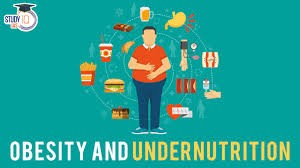Overindulgence in carbohydrates and low protein intake are contributing to India’s obesity crisis.
India’s obesity problem and its connection to the surge in non-communicable diseases like diabetes and hypertension has been evident for some time now. The findings of a recent survey offer a clearer picture of what may be one of the biggest factors driving this ballooning crisis. Conducted as part of a study by the Indian Council of Medical Research-India Diabetes (ICMR-INDIAB), in collaboration with the Madras Diabetes Research Foundation, the survey has found the typical diet across the country to be highly skewed in favour of carbohydrates, which contribute a whopping 62 per cent of daily calories for most Indians. Along with this overconsumption of refined carbohydrates — chiefly in the form of white rice, milled whole grains and added sugar —the survey, conducted with a sample of 1,21,077 Indian adults from urban and rural areas of 36 states, Union Territories and NCT-Delhi, has also found sub-optimal protein consumption. It is a crisis, in other words, that begins at the basic level of how people are putting together their meals.
In a country that has historically struggled with malnutrition, the growing number of people who appear to be simultaneously overfed and under-nourished should set alarm bells ringing at every level. It is further proof that rising prosperity does not automatically translate to a healthier diet. Indeed, what these findings make clear is that beyond tackling the recognised risks posed by overconsumption of salt-, fat- and sugar-laden ultra-processed, packaged snacks and drinks — increasingly evident across rural and urban parts of the country — there is an urgent need to address lack of awareness about the macronutrient composition of the average Indian’s diet. Some steps have already been taken to address the overindulgence in junk food, notably in light of the alarming rise in childhood obesity rates — more than 12 million children were grossly overweight in 2022, compared to 0.4 million in 1990, as per a Lancet study last year. One such initiative is the CBSE’s directive earlier this year to set up sugar boards in affiliated schools to reinforce the dangers of excessive sugar consumption.
But such steps are not nearly enough. Neither are government initiatives to encourage greater consumption of millets, which have been promoted as a more nutritionally-dense replacement for refined grains, as they do not take into account the fundamental problems of overindulgence in carbs and protein deficiency. This is also why policies that place political imperatives above public health concerns, such as the exclusion of eggs in midday meal schemes in various states, need a rethink. In a country where large portions of rice, roti and other grain-based foods form the centre of a meal, representing both security and satiation, what is needed is a strategy that places nutrition science at its centre, involving both children and adults. Overhauling the way people eat —how they have long eaten — is not going to be easy. But it must be done.
